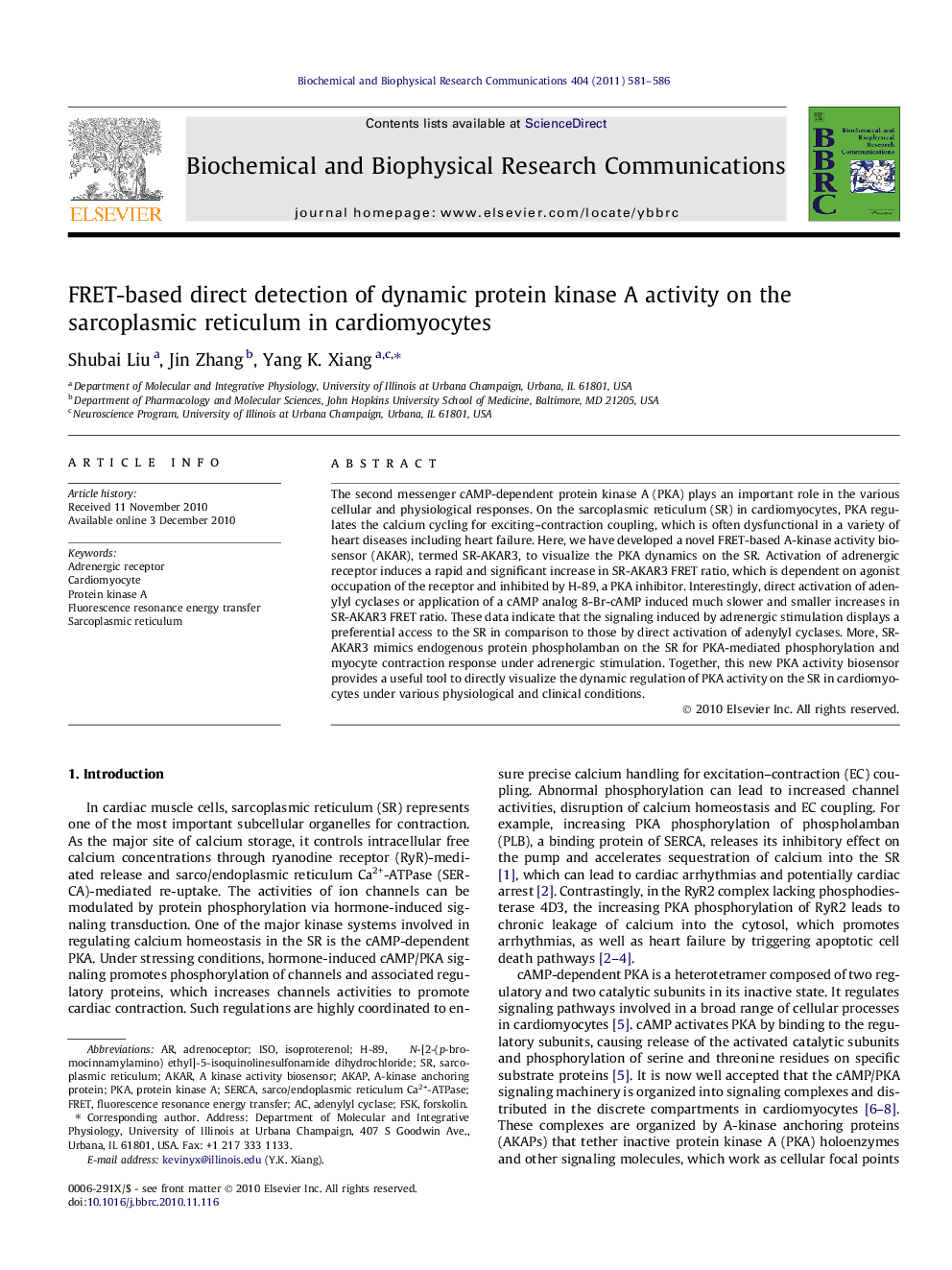| Article ID | Journal | Published Year | Pages | File Type |
|---|---|---|---|---|
| 1930702 | Biochemical and Biophysical Research Communications | 2011 | 6 Pages |
The second messenger cAMP-dependent protein kinase A (PKA) plays an important role in the various cellular and physiological responses. On the sarcoplasmic reticulum (SR) in cardiomyocytes, PKA regulates the calcium cycling for exciting–contraction coupling, which is often dysfunctional in a variety of heart diseases including heart failure. Here, we have developed a novel FRET-based A-kinase activity biosensor (AKAR), termed SR-AKAR3, to visualize the PKA dynamics on the SR. Activation of adrenergic receptor induces a rapid and significant increase in SR-AKAR3 FRET ratio, which is dependent on agonist occupation of the receptor and inhibited by H-89, a PKA inhibitor. Interestingly, direct activation of adenylyl cyclases or application of a cAMP analog 8-Br-cAMP induced much slower and smaller increases in SR-AKAR3 FRET ratio. These data indicate that the signaling induced by adrenergic stimulation displays a preferential access to the SR in comparison to those by direct activation of adenylyl cyclases. More, SR-AKAR3 mimics endogenous protein phospholamban on the SR for PKA-mediated phosphorylation and myocyte contraction response under adrenergic stimulation. Together, this new PKA activity biosensor provides a useful tool to directly visualize the dynamic regulation of PKA activity on the SR in cardiomyocytes under various physiological and clinical conditions.
Research highlights► Direct measurement of PKA activities on the SR with FRET biosensor. ► Adrenergic stimulation preferentially signals to the SR. ► PKA FRET biosensor mimics endogenous PLB phosphorylation in myocytes. ► Adrenergic stimulation induce dynamic PKA activity on the SR.
